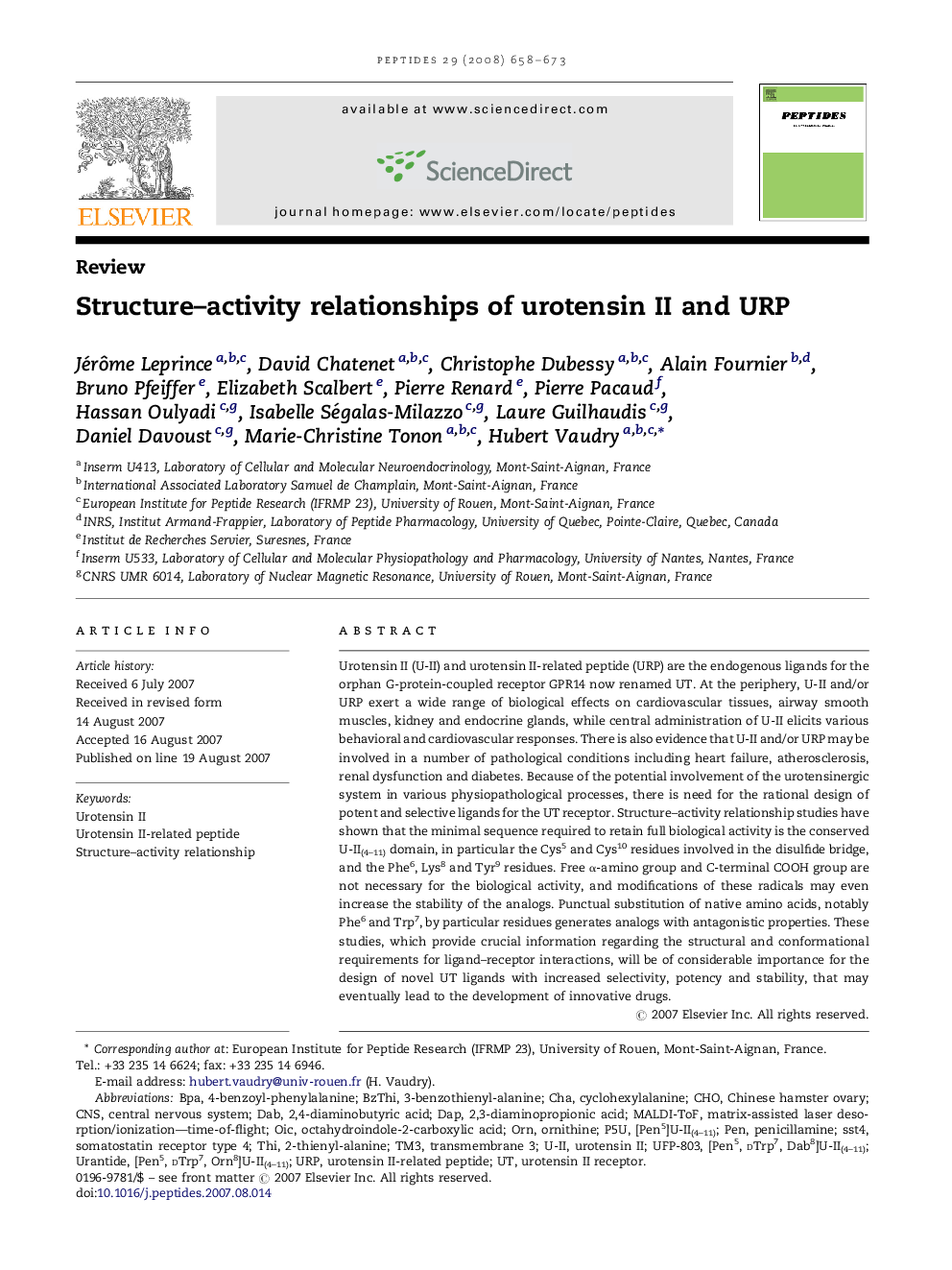| کد مقاله | کد نشریه | سال انتشار | مقاله انگلیسی | نسخه تمام متن |
|---|---|---|---|---|
| 2007147 | 1066365 | 2008 | 16 صفحه PDF | دانلود رایگان |
عنوان انگلیسی مقاله ISI
Structure-activity relationships of urotensin II and URP
دانلود مقاله + سفارش ترجمه
دانلود مقاله ISI انگلیسی
رایگان برای ایرانیان
کلمات کلیدی
DABU-IITm3UrantideOICORNTHIDAPMALDI-TOFBPA2,3-diaminopropionic acid - 2،3-دیامینوپروپیونیک اسید2,4-Diaminobutyric acid - اسید 2،4-دیامین بوتیریکornithine - اورنیتینOctahydroindole-2-carboxylic acid - اکتاویدروئیدول-2-کربوکسیلیک اسیدCho - برایChinese Hamster Ovary - تخمدان هامستر چینیPEN - خودکارCNS - دستگاه عصبی مرکزیcentral nervous system - سیستم عصبی مرکزیcyclohexylalanine - سیکلوهگزیلالانینCHA - نهpenicillamine - پنیسیلامینUrotensin II - یوتنسین II
موضوعات مرتبط
علوم زیستی و بیوفناوری
بیوشیمی، ژنتیک و زیست شناسی مولکولی
زیست شیمی
پیش نمایش صفحه اول مقاله

چکیده انگلیسی
Urotensin II (U-II) and urotensin II-related peptide (URP) are the endogenous ligands for the orphan G-protein-coupled receptor GPR14 now renamed UT. At the periphery, U-II and/or URP exert a wide range of biological effects on cardiovascular tissues, airway smooth muscles, kidney and endocrine glands, while central administration of U-II elicits various behavioral and cardiovascular responses. There is also evidence that U-II and/or URP may be involved in a number of pathological conditions including heart failure, atherosclerosis, renal dysfunction and diabetes. Because of the potential involvement of the urotensinergic system in various physiopathological processes, there is need for the rational design of potent and selective ligands for the UT receptor. Structure-activity relationship studies have shown that the minimal sequence required to retain full biological activity is the conserved U-II(4-11) domain, in particular the Cys5 and Cys10 residues involved in the disulfide bridge, and the Phe6, Lys8 and Tyr9 residues. Free α-amino group and C-terminal COOH group are not necessary for the biological activity, and modifications of these radicals may even increase the stability of the analogs. Punctual substitution of native amino acids, notably Phe6 and Trp7, by particular residues generates analogs with antagonistic properties. These studies, which provide crucial information regarding the structural and conformational requirements for ligand-receptor interactions, will be of considerable importance for the design of novel UT ligands with increased selectivity, potency and stability, that may eventually lead to the development of innovative drugs.
ناشر
Database: Elsevier - ScienceDirect (ساینس دایرکت)
Journal: Peptides - Volume 29, Issue 5, May 2008, Pages 658-673
Journal: Peptides - Volume 29, Issue 5, May 2008, Pages 658-673
نویسندگان
Jérôme Leprince, David Chatenet, Christophe Dubessy, Alain Fournier, Bruno Pfeiffer, Elizabeth Scalbert, Pierre Renard, Pierre Pacaud, Hassan Oulyadi, Isabelle Ségalas-Milazzo, Laure Guilhaudis, Daniel Davoust, Marie-Christine Tonon, Hubert Vaudry,